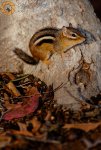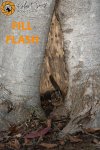rip18
Senior Member
A chipmunk from yesterday. I saw him going in and out of a hollow in the base of a beech tree. So, I walked waaay back to my truck & got my gear togather. When I came back (5 to 10 minutes later?), he was STILL there! 
I got a few shots of him that I liked.
Nikon D300s, Nikkor 400 mm, f/4.5, 1/250th second, ISO 200, tripod, fill flash, cropped slightly.

I got a few shots of him that I liked.
Nikon D300s, Nikkor 400 mm, f/4.5, 1/250th second, ISO 200, tripod, fill flash, cropped slightly.
Attachments
Last edited:




